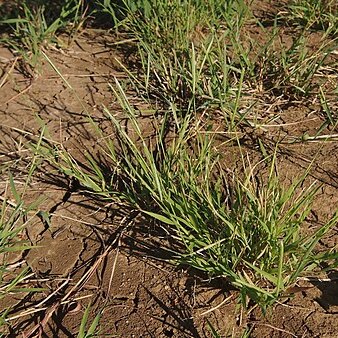Annuals or perennials, with erect or geniculately ascending culms. Leaf-blades flat and narrowly linear or involute and filiform, acute to acuminate; ligule short, membranous, usually ciliate along the upper edge. Inflorescence terminal, consisting of 1–many digitate 1-sided spikes bearing flattened imbricate spikelets. Spikelets 1-flowered, oblong or more rarely ovate, usually with a rhachilla-extension (occasionally with a reduced lemma at its tip in B. fulva), strongly laterally compressed, usually golden brown or bronze, occasionally yellowish green; glumes narrowly oblong-lanceolate, rarely ovate-lanceolate (when flattened), subequal, enclosing the floret, strongly keeled, thinly coriaceous, 1-nerved, obtuse or rounded, rarely acute; lemma much shorter than the glumes, broadly oblong to elliptic-lanceolate (when flattened), membranous, folded along the midnerve, ciliate along the nerves or all over, obtuse or acute, rarely with a short mucro; palea ovate (when flattened), ciliate along the nerves. Caryopsis obovoid.
Spikelets 1-flowered with rhachilla extension (rarely this bearing a minute vestigial floret), strongly laterally compressed, sessile, alternate in 2 rows on a tough axis, disarticulating above the glumes, usually golden-brown or bronze, rarely yellowish-green; glumes subequal, thinly coriaceous, keeled, enclosing the florets, obtuse or rounded at the apex, rarely acute; lemma much shorter than the glumes, membranous, folded along the midnerve, ciliate along the nerves or all over, obtuse or acute at the apex, rarely with a short mucro or awnlet.
Inflorescence of 1–many digitate 1-sided racemes bearing imbricate spikelets on a flat or triquetrous rhachis.
Caryopsis ellipsoid.

